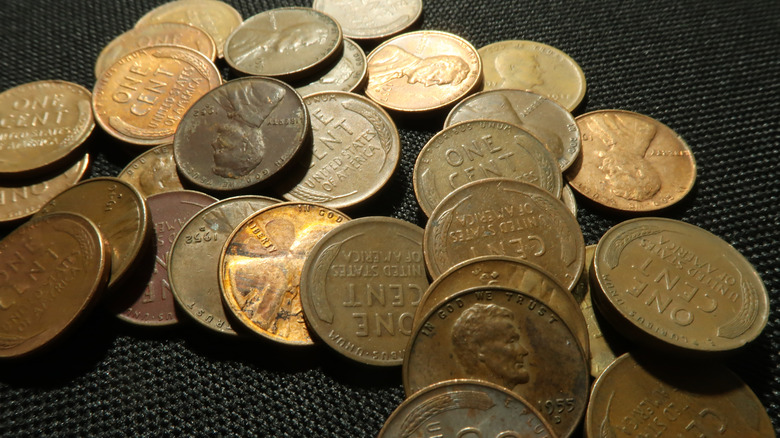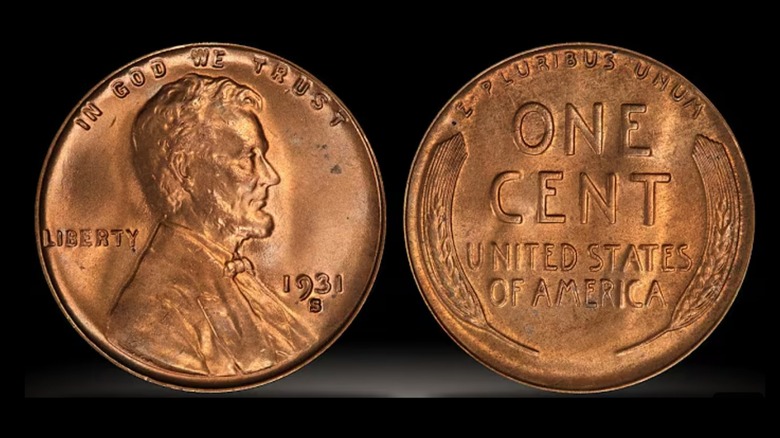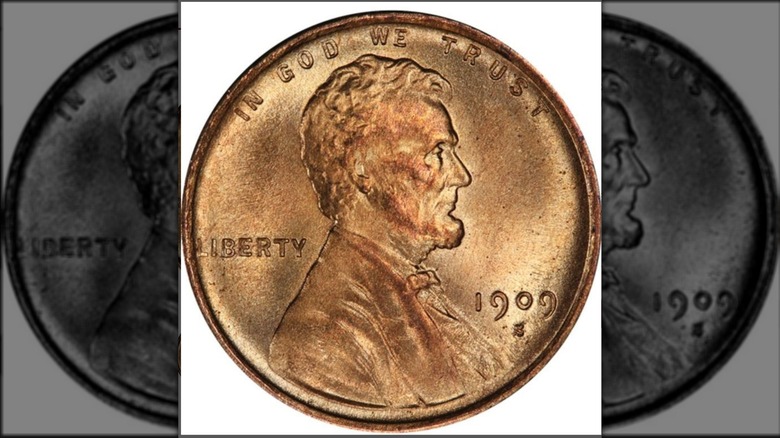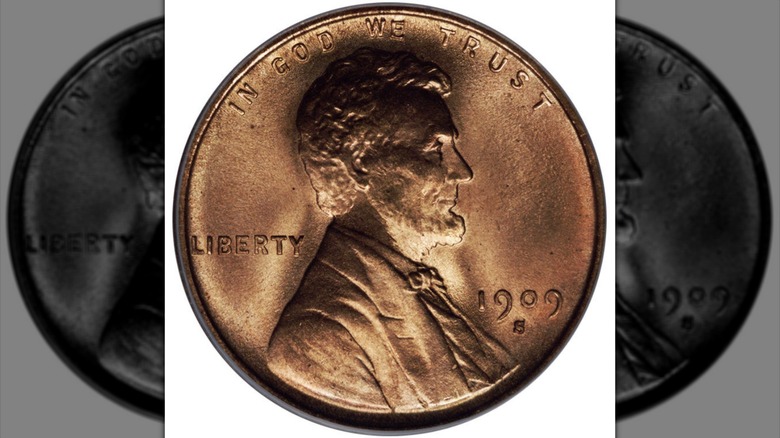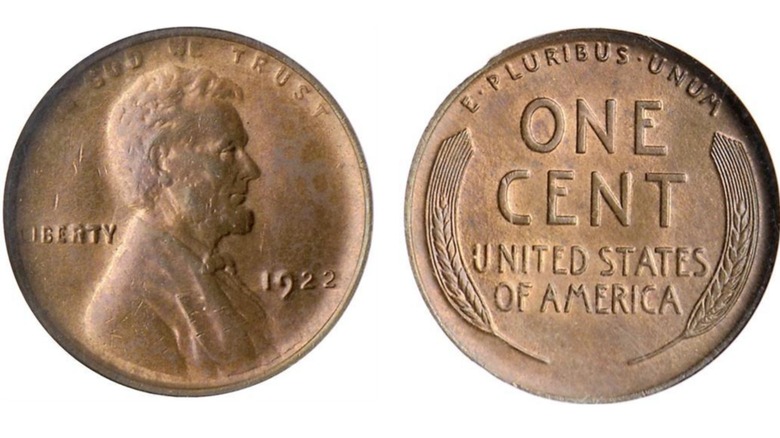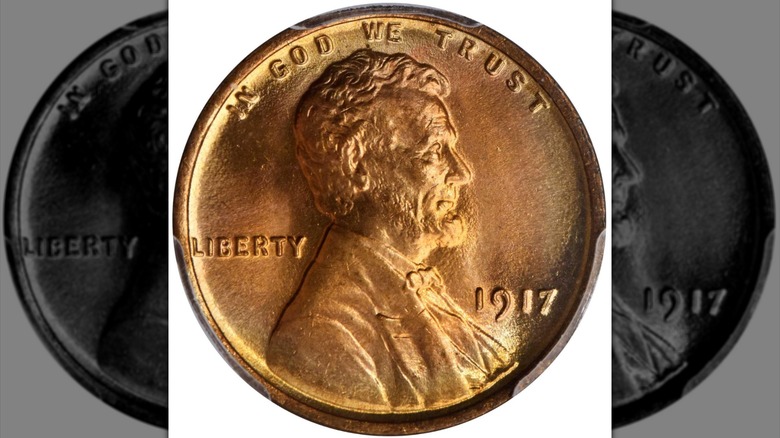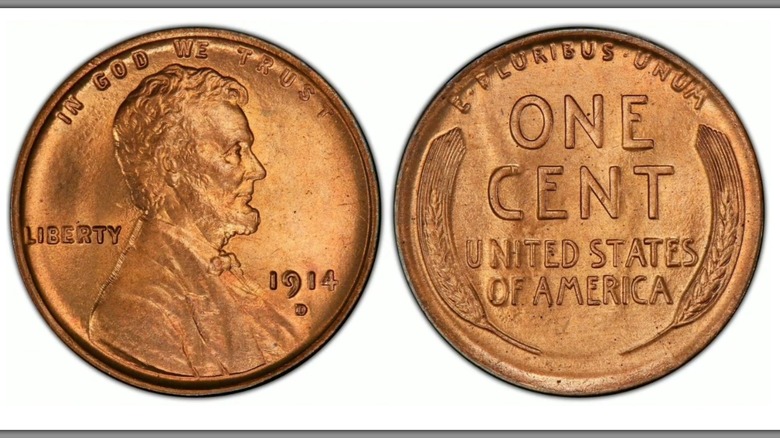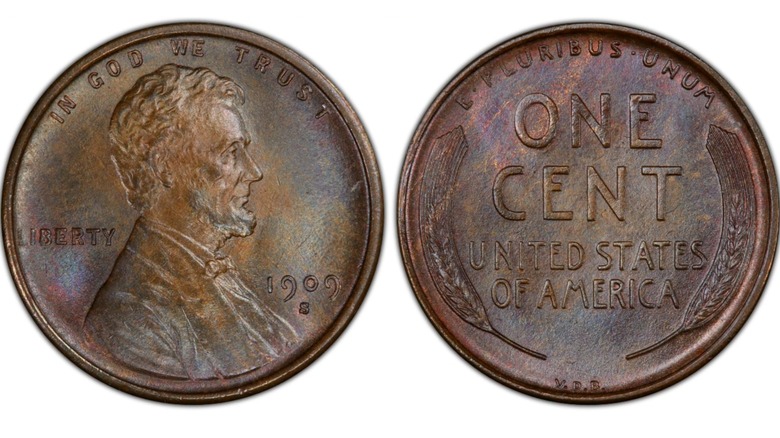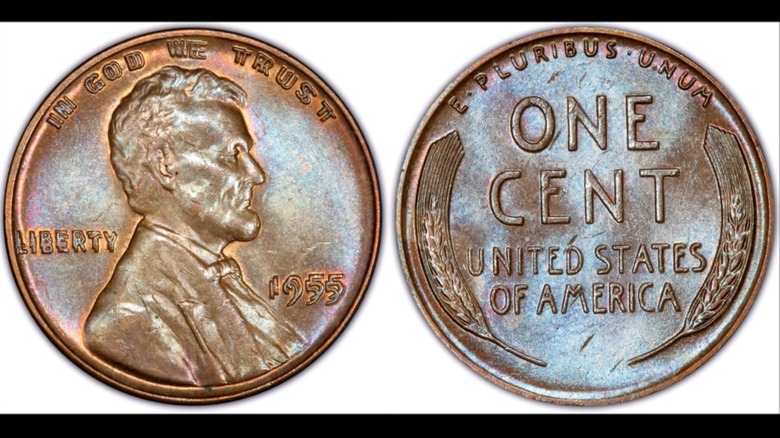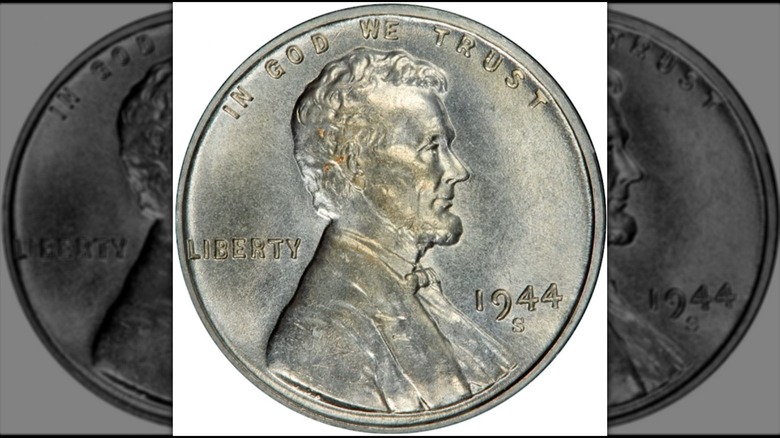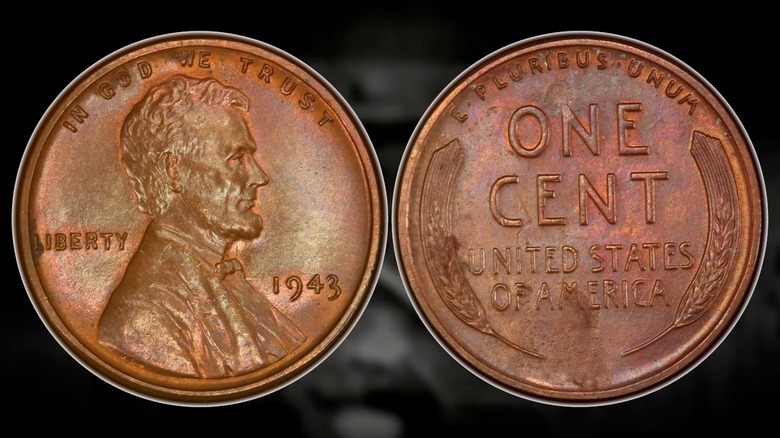The Ten Most Valuable Wheat Pennies, Ranked
We may receive a commission on purchases made from links.
Have you ever noticed two wheat stalks on the back of an old penny? That little piece of copper –– sometimes steel –– could actually be worth more than your car, or house, or your lifetime salary. Wheat pennies, first released on August 2, 1909, were struck to commemorate the 100th anniversary of Abraham Lincoln's birth and also to feature a real person on American currency rather than the usual allegorical figures like Lady Liberty. Designed by the talented sculptor Victor David Brenner, these coins were produced by the billions for around 50 years, from 1909 to 1958, before the reverse was changed to the Lincoln Memorial. You might wonder why these pennies are so valuable. It's thanks to a mix of low mintages, minting errors, and because they have a tale to tell.
Collectors chase them with the same frenzy people once hunted for gold in California or tulips in Holland. In 2024, the global market for collectible coins was valued at over $10.74 billion based on a report by Maximize Market Research and is projected to more than double by 2032. A key principle in this field is trust. That's why services such as PCGS (Professional Coin Grading Service) and NGC (Numismatic Guaranty Company) authenticate and grade coins on a 70-point scale to guarantee a coin's authenticity and a universal standard for quality, allowing honest buying and selling. The wheat pennies you'll see next have crossed the Rubicon and transcended from simple cents to numismatic legends. So go ahead and check your jar –– you might have one of these valuable coins lying around; you never know what could turn up. The treasure hunt begins now.
10. 1931-S Lincoln cent — $18,600
At the beginning of the 1930s, the U.S. faced severe troubles. The Great Depression, sparked by the Wall Street Crash of October 1929, had wreaked havoc when a speculative stock market bubble burst, wiping out billions in wealth overnight and leaving tens of millions unemployed. In 1931, with the demand for new currency almost vanished, the U.S. Mint struck only a small quantity of Lincoln cents at the San Francisco facility — 866,000 to be precise. This tiny figure has the second-lowest mintage in the entire 50-year run of the Wheat Penny series (the lowest coinage belongs to the 1909-S V.D.B. Lincoln cent, with only 484,000 produced).
Unlike other rare coins that became valuable only after wearing down in circulation, the 1931-S Lincoln cent was special from the very beginning because of its scarcity and peculiar distribution pattern. While most of the entire mintage took place in 1931, it remained "hoarded" in Treasury vaults until 1935, meaning that finding a pristine example is easier than coming across a heavily worn one. It's quite a paradox in the world of numismatics. In 2021, a stunning MS66+RD specimen — a near-perfect coin with its original vibrant red lustre — was sold by Heritage Auctions for $18,600. Even in circulated condition, this coin is highly prized, with nice examples regularly selling for over $100 on eBay. Because of its short supply and release date, the 1931-S secures a seat among the "Major Four Key Dates" for anyone trying to assemble a complete set of Lincoln Cents, keeping its value strong across all grades.
9. 1909-S Over Horizontal S — $32,900
The United States Mint was founded in 1792, the same year Congress passed the Coinage Act, which authorized the creation of a national mint and established the U.S. dollar as the country's official currency. Back then, everything got made by hand. As the years went by and technology progressed, mechanization substituted most of the process, but not all, and still in the dawn of the 20th century, many stages in the coin-making operation were done manually. One of those processes was true for mint marks, those small letters that identify where a coin came from. Being so, this practice was ripe for human error, and in 1909, a mint employee at the San Francisco Mint committed a truly spectacular mistake. Well, a mistake then, a treasure today.
While preparing a die for the new Lincoln cent, the worker accidentally oriented the "S" punch sideways and struck it into the die. Seeing what he'd done, he tried to fix it by punching a second, properly oriented "S" directly on top of the first one, which, of course, didn't erase the original error. Instead of that, it created a highly collectible slip-up known as a repunched mintmark (RPM). It's the kind of blunder that now headlines lists of valuable coins you might have. When you see the coin, the faint, horizontal outline of the first "S" is clearly visible underneath and around the correct, vertical "S." The market for errors like this is robust, especially for well-preserved examples. In July 2022, a virtually perfect issue with brilliant red luster, graded MS67RD, found a new owner in a Legend Auctions event for an impressive $32,900.
8. 1909-S Lincoln cent — $69,000
In 2004, a mint state MS67+RD example, a high grade that represents quality and preservation, was sold by Heritage Auctions for a remarkable $69,000. But it's not only about value; rather, it's the fascinating history this coin carries. It was 1909, and President Theodore Roosevelt wanted to have a more artistic and patriotic coinage in the country, so he hired designer Victor David Brenner for the task. Brenner fulfilled his mission, but on the reverse of the coin, maybe as a narcissistic impulse, he placed his initials V.D.B., which obviously ruffled many feathers in the government. Nobody liked that egotistical action, and the U.S. Mint ordered the initials to be removed from the dies and the coins to be taken out of circulation on August 5, just three days after the penny's debut.
The San Francisco Mint started to strike new coins, with the result being the initial-less twin 1909-S Lincoln cent. Before the year ended, this branch had struck 1,825,000 of the new pennies, which appears to be a lot, but it is nothing compared to the Philadelphia Mint's output of over 72.7 million units that same year. As expected, the low mintage made the 1909-S a "semi-key date" piece for serious collectors looking to complete their Lincoln sets. The frenzy for the fresh design was such that it completely overshadowed another coin from that year, the 1909-S Indian Head penny, which, despite having a lower mintage of just 309,000, was relegated to a lesser position in sought-after collectible coins.
7. 1922 No D Strong Reverse — $92,000
To understand this penny's story, wear your Sherlock Holmes cloak and cap and check these facts. In 1922, the United States was amid a sharp post-war recession, which drastically reduced the need for new coins, so the U.S. Mint produced pennies only at its Denver facility. Don't forget this because it's key to the plot. Since the Philadelphia Mint (which used no mark) didn't strike any cents that year, whatever 1922 penny found lacking a mint mark must, by default, be an error coin from Denver — which, in fact, used the "D." So basically, this cent is a Denver coin that looks like a Philadelphia issue but isn't. That makes it one of the rarest coins in the U.S. The error existed because at the Denver Mint, a pair of dies clashed together without a blank coin between them, causing damage.
To salvage the obverse die, an employee aggressively polished its surface to remove the clash marks, but in the process, he erased the small "D" mint mark. Then, he put the now-unmarked obverse die back into service but left a fresh, sharp reverse die, resulting in coins with crisp, well-defined wheat stalks on their flip side. Yet, not all 1922 pennies with a missing "D" are worth tons of money. Some were struck from other worn dies that erased the mint mark but also had the reverse equally worn — these are far less valuable. The auction record for a penny with no "D" and a strong reverse is $92,000 at a Stack's Bowers sale on January 7, 2008, but other "No D" coins have been sold for lower prices, including $44,063 in January 2013 and $82,250 in April the same year.
6. 1917 Doubled Die Obverse — $120,000
If you are in your late 40s and notice a double image in a 1917 penny, don't rush to the ophthalmologist; your eyes are okay. Instead of that, go straight to an authenticator because you've found a perfect example of a "double die" error from the Philadelphia Mint. This type of error happens when the hub, a master punch bearing the coin's design, strikes the die multiple times at slightly different alignments, resulting in a double image on the die itself, which is then transferred to every coin it presses. The doubling in the 1917 cent is very strong, and you can easily spot it, particularly on the date and the motto "IN GOD WE TRUST." Even though the mistake was so evident, it went unnoticed for decades, quietly entering circulation and being used in everyday transactions during and after World War I.
Because of this, most of these coins became heavily worn from years of passing from hand to hand to buy newspapers, loaves of bread, sweets, or a cheap cinema ticket in small cities. So, finding an uncirculated 1917 Double Die penny with its original bright red copper luster is a titanic challenge that, if found, could help any collector reach the numismatic El Dorado. The population of top-tier examples of this coin is minuscule; PCGS, a leading grading service, estimates that only about 25 specimens have survived in grade MS65 or better. In 2019, the finest known example of a 1917 Double Die penny, graded MS67+RD, reached a jaw-dropping $120,000 at a Stack's Bowers auction, proving what collectors are willing to pay for an old piece of metal with a mistake on it. Clearly, pennies worth a ton of money are not accidents of history, or are they?
5. 1914-D Lincoln cent — $158,625
Unlike other heavyweights on this list, the 1914-D Lincoln cent is not an extravagant mint error but a regular-issue coin whose value comes from its scarce coinage. In 1914, the Denver Mint struck a mere 1,193,000 pennies, which is peanuts compared to the 75 million produced by the Philadelphia Mint. This simple fact makes the 1914-D the rarest and most expensive hurdle for collectors who try to complete their set of Lincoln cents. In 2018, a mind-blowing example graded MS66+RD by PCGS — a nearly immaculate coin with its full original red gleam — sold at auction for a record-shattering $158,625. Even without the brilliant red color, a beautiful MS66 Brown specimen found a new owner when it fetched $16,100 at a 2008 Stack's auction.
But don't be discouraged if yours is heavily worn; Heritage Auctions has sold circulated examples for $300, which is not bad for a penny that once bought a piece of candy. When these coins left the mint, they slipped into the economy without any fanfare; no first-year issue, no controversial story, only pennies meant to be spent. Until collectors realized how scarce the 1914-D had become, it was too late, and most of the mintage had been worn to smooth, flat pieces of metal with almost no details, so the demand for uncirculated examples remains incredibly intense. Just be careful since this coin is a prime target for counterfeiters, who will often take a common and inexpensive 1914 penny from Philadelphia, add a "D" mint mark, and sell it to unsuspecting buyers. If not authenticated and graded, avoid it.
4. 1909-S V.D.B. Lincoln cent — $168,000
This penny is legendary and was born valuable. It belonged to the first issue of the Lincoln Cent, a series launched by President Theodore Roosevelt to honor the 100th anniversary of Abraham Lincoln's birth. As the story goes, the president personally commissioned Victor David Brenner to design the cent, but as a mark of pride, Brenner marked his initials, V.D.B., on the reverse of the coin, at the very bottom between the wheat stalks. And the cents left the mint. Alas, the penny met with neither pomp nor ceremony from the public or Treasury officials, with a swift backlash even from The Washington Post, saying "the coin was doomed" just days into its release (August 2, 1909).
When authorities ordered to get rid of the initials, the Philadelphia Mint had already produced around 28 million V.D.B. cents, but the San Francisco Mint had only struck a measly 484,000. That small mintage instantly turned the 1909-S V.D.B. into a rarity, with people lining up at banks to secure the controversial pennies, and newsboys, who were among the first to read the headlines, hoarding them, and the street value of the coin skyrocketed from one cent to as much as 25 cents overnight. Decades on, and in a new century, elite examples of the 1909-S V.D.B. have reached exorbitant prices, like an MS67RD specimen, which, in April 2002, fetched $168,000 at a Stack's Bowers auction. Another one, not so fancy, sold at Heritage Auctions for $99,000 on January 16, 2025. This is the money you need in your savings to retire rich.
3. 1955 Doubled Die Obverse — $287,156
You don't need a magnifying glass or a microscope to detect the error in this coin — it's an in-your-face mistake, immediately obvious. At the Philadelphia Mint, a working die received a second, misaligned impression from the master hub, striking a dramatic doubling — an almost three-dimensional, blurry effect — on the obverse date "1955" and the mottos "LIBERTY" and "IN GOD WE TRUST" in thousands of coins. When mint employees caught the error partway through a production run, around 40,000 flawed pennies had already been struck and mixed into millions of normal coins. Following this, the daunting and expensive task was to sift through to track down the "wrong pieces," but the officials decided to let them go as it proved pointless. As soon as collectors knew about this, the greatest treasure hunt in numismatic history began.
Numerous pennies surfaced in the Northeast, mostly around Boston and upstate New York, with many pristine examples found in change from cigarette vending machines, likely because they were packaged in fresh rolls from the bank. The 1955 Double Die became a pop culture icon (even non-collectors had heard of it), and the media frenzy that followed ignited the public's interest, launching the modern era of error collecting and establishing a robust market for such mistakes that thrives to this day. Tangible proof came in January 2023, when a spectacular specimen sold at a GreatCollections auction for $287,156. Earlier in 2008, another PCGS-graded MS65+RD coin realized $114,000 at Stack's Bowers. More typical Heritage Auctions results include $3,360 for an MS62 and $5,760 for an MS64, both brown items.
2. 1944-S Steel cent — $408,000
The 1944 Steel Cent is an error coin born from the chaos and shortages of World War II. In 1943, two years after the United States entered WWII, the U.S. Mint changed the material of the pennies to zinc-coated metal planchets to use copper for the war effort. The result was the silvery-gray "steelies," common from that time. One year later, in 1944, the tides of the war had turned in favor of the Allies, so the American Mint switched back to a copper-based alloy that came from recycled brass shell casings from the battlefield. But in this transition, a few of the leftover steel planchets from 1943 were accidentally left in the coin presses and struck with the new 1944-dated dies, creating an "off-metal" error of monumental rarity.
Even though it happened at all three U.S. Mints — Philadelphia, Denver, and San Francisco — they are not all equal. The Philadelphia examples are the most numerous; the Denver ones are scarcer; but the undisputed king of the 1944 steel cents is the San Francisco issue because only two of them are known to exist. So, for a serious collector really into numismatics, getting one of these coins is a major event that deserves a fine dinner and a glass of Macallan Valerio Adami 1926 at the most expensive restaurant. The auction record for any 1944 Steel Cent was set in August 2021 when Heritage Auctions sold a sparkling MS66 specimen for $408,000, while a Philadelphia item fetched $180,000 just a few months before at the same auction house.
1. 1943-D Bronze/Copper cent — $1.7 million
Well, here you have the last item on the list and, of course, the most expensive. For over 75 years, this numismatic unicorn has fueled treasure quests like no other. The 1943 Bronze/Copper Cent story begins amid WWII. Copper was a strategic material needed for ammunition and communications equipment, so the U.S. Mint decided to strike all one-cent coins on zinc-coated steel planchets. However, in that frantic, swift mintage operation, workers at every mint left some bronze planchets in the press hoppers. When presses struck and coinage started, copper-colored pennies came out when all of them were supposed to be silver-coated. This is the opposite of what happened to the 1944 Steel cent. A widespread but false rumor claimed that Henry Ford would give a brand-new car to anyone who could find him a 1943 copper penny.
This story, plus advertisements in comic books and magazines offering huge rewards, sparked a nationwide frenzy that has never truly died down. Stories like this echo today, with rumors on the internet of a 2 million dollar penny allegedly still in circulation. Experts estimate that fewer than 20 of these coins exist in total, with between 10 and 15 coming from the Philadelphia Mint, maybe five from the San Francisco Mint, and a single, unique specimen from the Denver Mint. That particular 1943 Denver example holds the record for any Lincoln cent, having sold in a 2010 private transaction for an incredible $1.7 million. A few years later, in 2017, the only known coin to be designated as "Red" for its pristine original color was reportedly acquired privately for over $1 million. But you can find other examples at Heritage Auctions for a more modest price, such as a Philadelphia MS62BN that fetched $372,000.
